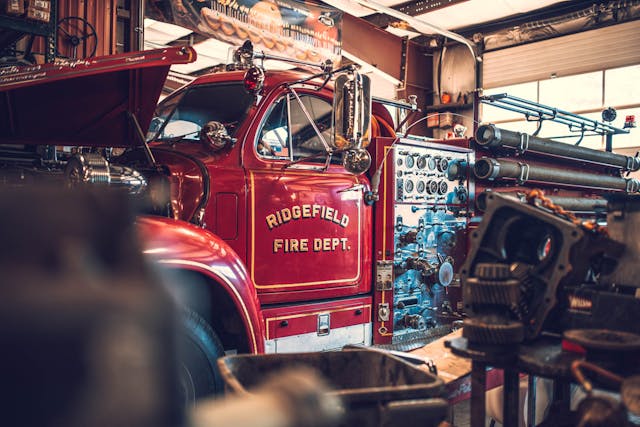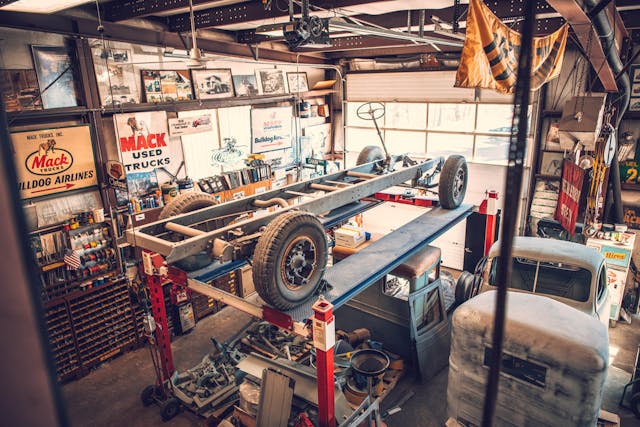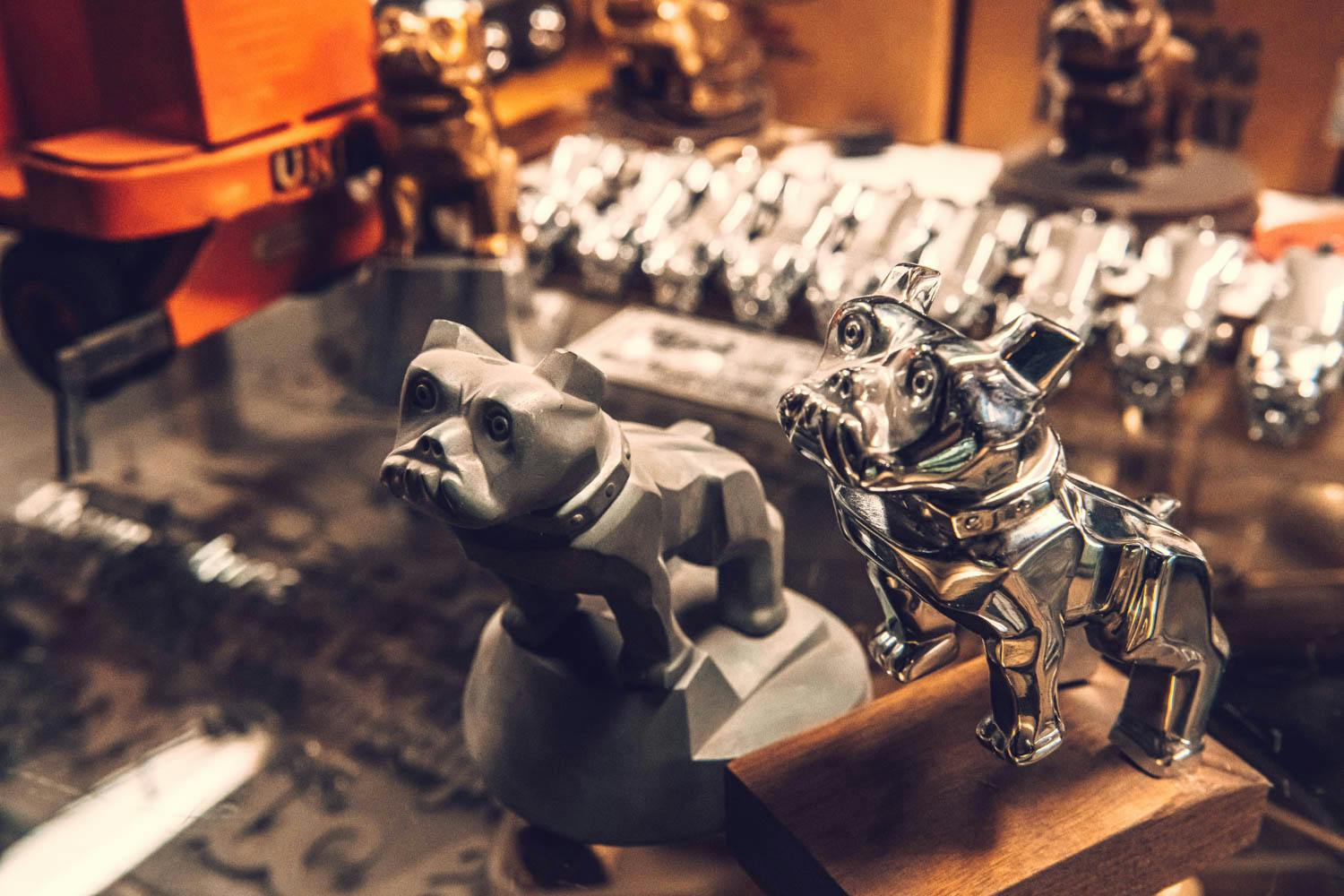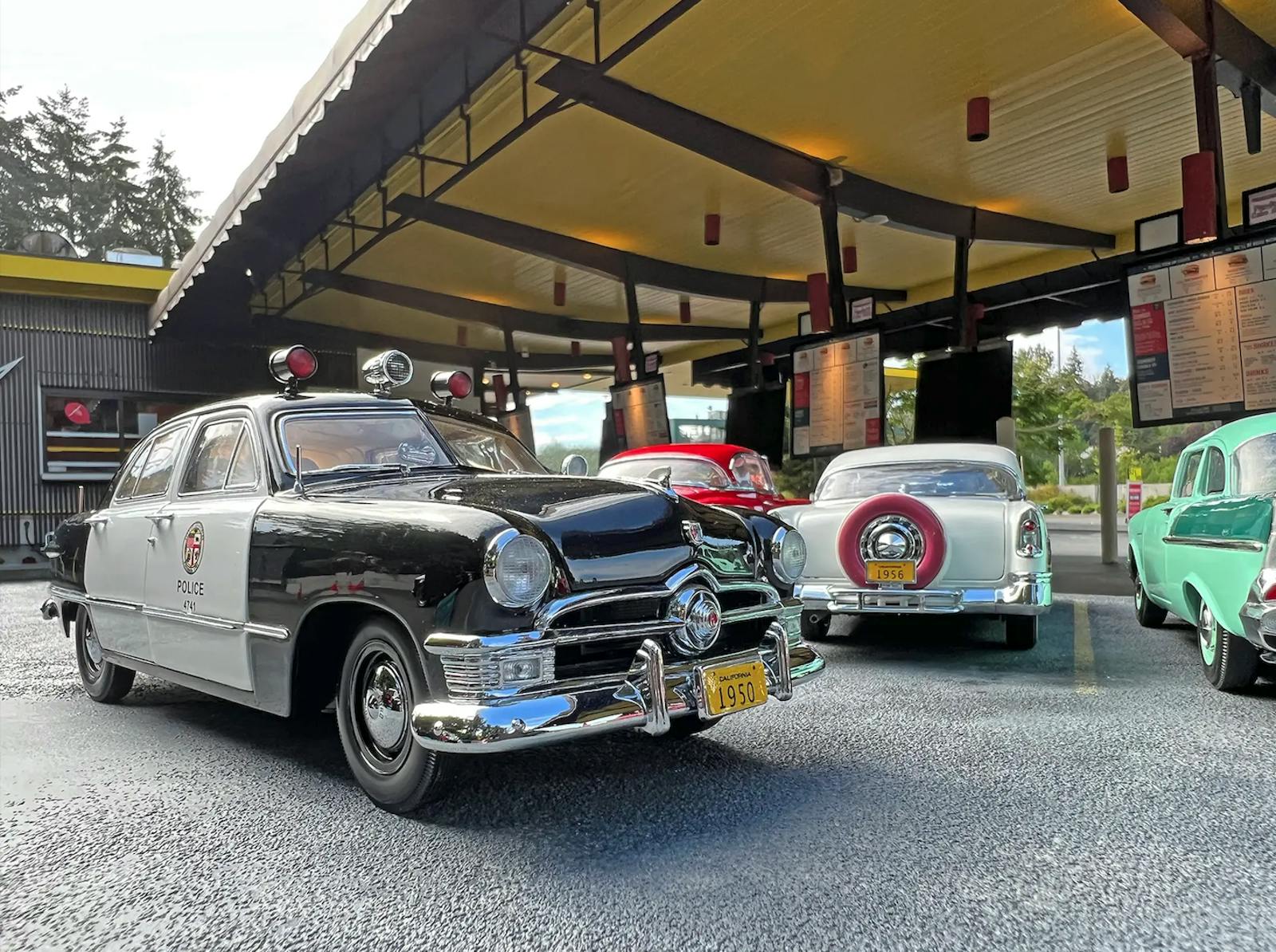Think your project is big? This shop takes on Mack trucks
Like most restoration experts, Matt Pfahl can spout production numbers and model designations without looking up from his workbench. He knows all the collectors in his specialty, has a calendar full of show dates, and owns a shop papered with old photos and vintage sales brochures. His dog’s name is Diesel, which is your first indication that Pfahl’s restoration world isn’t based on racing Hemis or high-revving V-12s. Think bigger.
You’ll find Pfahl and his giants in a vast, metal-sided warehouse in Bethlehem, Connecticut. Outside, a massive claw lies partially buried in the earth, and 40-foot skeletons dream of freight runs long over. Inside, the air smells of hot metal and dark smoke, and racks of beefy shelves house engines and transmissions the size of Triumph roadsters. And they’ll all be brought back to life by the big-truck specialists of Pfahl’s Mack and Antique Truck Restorations.
Pfahl bought his first truck, a 1955 Mack B61, in 1987, when he was just out of high school. The Mack B models are among the most popular of classic big rigs, with a rounded cab and fenders and an upright radiator shell that looks like an early Ford magnified by 10. Pfahl’s restoration on that truck netted him a reputation as a man who paid attention to the small details, even on a large project. It’s now been more than 25 years since he opened for business, and he’s about to add another 20-by-80-foot shop to his 8000-square-foot facility. “My first shop was 18 by 40 and sat on my parents’ property,” Pfahl says. “If you wanted to change your mind, you’d have to step outside to do it.”
These days, Pfahl has 11 employees. On the day we visited, there were six projects in the works, half of which were done and replaced by new ones by the time I called a few weeks later to check on the model year of one of the firetrucks. “Do you remember the name on it?” Pfahl asked apologetically. “We do so many firetrucks.”
Firetrucks are popular with truck collectors for the obvious reason. Who didn’t grow up wanting to be a firefighter? They also survived more often than other work vehicles, because they were built better, kept inside, and maintained regularly by the station. “Other work trucks got worked to death, rebuilt, and worked to death again,” Pfahl says.
Big trucks were often custom orders, especially firetrucks. Luckily, Mack has kept impeccable archives, and Pfahl can call the historian with a serial number and get a full “line sheet” that details every option, as well as blueprints for anything from a window trim piece to a fender. “It’s not like there’s a catalog I can flip open to get parts,” he says. “But if it’s broken and bent, I can fix it or re-create it. If they made it once, I can make it again.”

In the back corner, an enormous 1960s-era dump truck they’ve nicknamed the Orange Monster towers over the rest of the rigs. “We’re making a whole new dump bed for that. It’s as big as a living room.” It’s as big as some apartments, too. And like a walk-up, you have to climb a ladder to see the 673-cubic-inch, turbocharged straight-six diesel in the engine bay. Driveline components are measured not in pounds but in tons. Ask Pfahl what kind of engine hoist it requires and he’ll point to a forklift.
Forklifts aside, restoring a big rig is no different from restoring a car. Like car collectors, truck enthusiasts range from folks who like hot rods to folks who like it stock. In all of it, Pfahl has seen the hobby grow, despite the challenges of housing and registering such large collectibles. “Twenty years ago, we had maybe five or six things to do each season. Now you could do two to three events per weekend.” He adds that although interest in ancient chain-driven trucks remains strong, just like in the car collecting world, more ’70s and ’80s machines are getting attention. “Folks want the truck they started their business with, or the truck their dad had.”
The one scene you won’t find at a big truck show? A numbers-matching debate. “Trucks got rebuilt to make them work. By the time they come here, they’ve had different engines, different transmissions—maybe it was a dump and now it’s a flatbed. You tell someone a truck is low miles or numbers-matching, and they’re gonna ask what’s wrong with it.”
In all his time wrenching on big machines, Pfahl says there’s only been one that nearly beat him—a 1954 GMC Scenicruiser Greyhound bus. “We worked on that for seven years. It came in boxes. No motor, no transmission, no floors, no wiring. It was a million-piece puzzle and every piece was white. Took 25,000 hours and 45,000 rivets.” Pfahl heard that HBO is going to use it for a show. “I hope they shoot it,” he says. He doesn’t mean with a camera.
The bus is an outlier, because Pfahl is remarkably affectionate towards his vehicles. He pats a 1939 Mack FG C-cab gently on its glossy green fender as he explains its rarity (162 built, he knows of six still in existence, and only this one is still owned by the company that originally bought it). And he gets downright flushed and sparkly-eyed when he tells me the Mack museum is sending over its oldest existing truck for work. “To have it here in this shop is going to be amazing.” Pfahl stops for a second, looks around, then says: “My first shop was built over my childhood sandbox. I guess I’m still just a kid playing with trucks.”

This story originally appeared in the March/April 2020 issue of Hagerty Drivers Club magazine.





